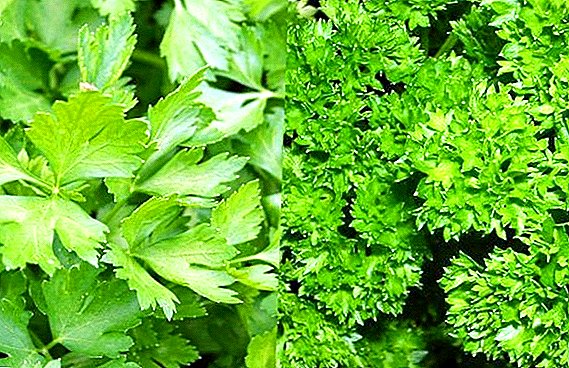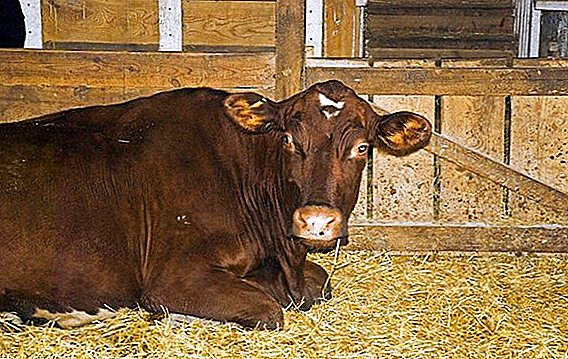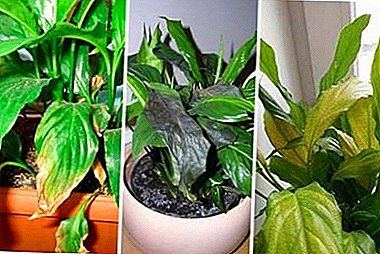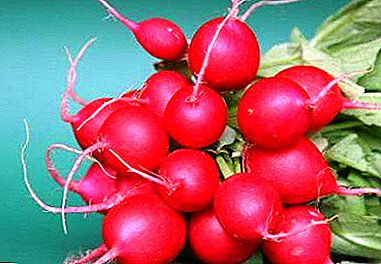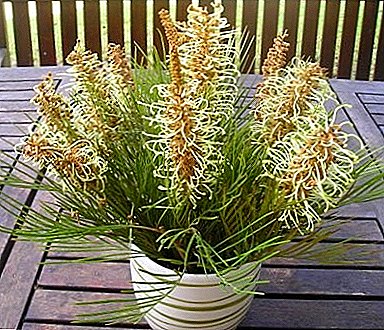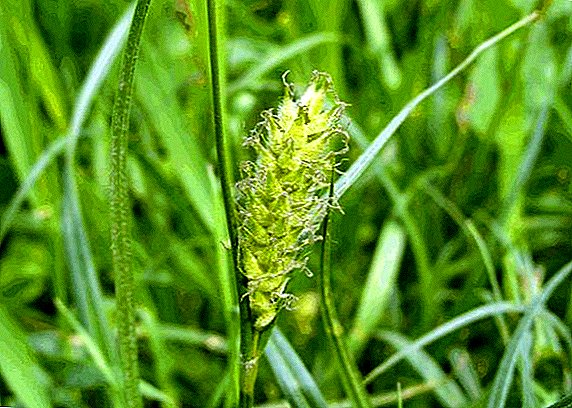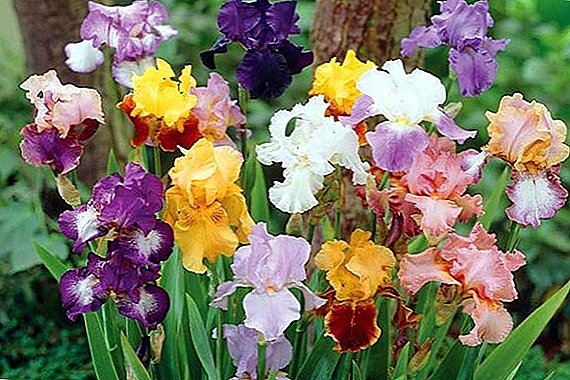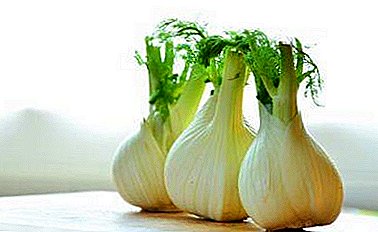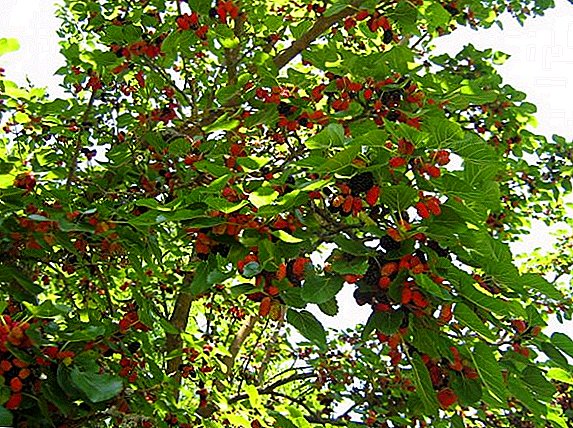 In the world grows about 120 species of mulberry tree (mulberry).
In the world grows about 120 species of mulberry tree (mulberry).
This tree is common in Japan, India, China and Central Asia, and its fruits and leaves are successfully used in medicine because they have medicinal properties.
Did you know? Silkworm worms feed on white mulberry leaves.
 The mulberry tree is a drought-resistant and cold-resistant tree, which makes it a very profitable plant in almost any area. In this article we will reveal to you the secrets of caring for the mulberry, teach you to propagate the mulberry tree and tell you how to deal with its diseases and pests.
The mulberry tree is a drought-resistant and cold-resistant tree, which makes it a very profitable plant in almost any area. In this article we will reveal to you the secrets of caring for the mulberry, teach you to propagate the mulberry tree and tell you how to deal with its diseases and pests.All the nuances of proper planting mulberry
Mulberry grows more than 10 meters in height. One tree can have either male or female flowers, although there are also such trees that both have at the same time. For the cultivation of mulberry there are two methods of reproduction: seedlings and seeds.
Seeds are planted either in late autumn or spring, but in both cases they are pretreated with a special solution that is designed specifically for seeds.
If you decide to plant a mulberry tree in the fall, it is best to do so before the end of October. For planting in spring, you must first soak the seeds in cold water (for a day), and then place them in warm water for another 24 hours.
The site for planting should be sunny and after you find such a site on your territory it will be possible to proceed to the preparation of seed furrows. Grooves are well watered with water mixed with fertilizers for fruit and berry crops.
 Since the seeds are very small, it is best to sow them less often, deepening into the soil by 3-5 cm. After sowing, pour the grooves abundantly and use mulching, which will prevent the soil from drying out. If planting is carried out in the fall, then you should additionally insulate the beds.
Since the seeds are very small, it is best to sow them less often, deepening into the soil by 3-5 cm. After sowing, pour the grooves abundantly and use mulching, which will prevent the soil from drying out. If planting is carried out in the fall, then you should additionally insulate the beds.
For good growth, mulberry seedlings are fed with fertilizers.
By autumn, with proper care, the seedlings will be strong and large. Then they are seated so that they have more room for development. The distance between plants is 3-5 m.
Mulberry begins to bear fruit 3-5 years after planting, which largely depends on the plant variety and the characteristics of care. Mulberry root system is very powerful and can withstand the cold winter or summer heat.
You can also plant a mulberry tree with the help of seedlings. Purchased seedlings are planted in the spring on a sunny plot. A pit is dug at this place, after which compost is added to it.
The soil at the selected place is plentifully watered with water diluted with fertilizer for rooting seedlings. Then everything is covered with earth. After the next watering, the soil around the seedling is mulched.
In order for the mulberry to grow well-groomed and not too large, its crown should be cut and shaped.

Did you know? Black mulberry fruits contain 12% of sugars, organic acids, pectic substances and a large amount of potassium.One of the most popular types of mulberry is "hanging", which grows up to 2.5 m. Plant this variety better in autumn at the end of October. In the first year should be fed complex fertilizers once a month.
In dry weather, it is necessary to water the plant as often as possible, periodically removing weeds. This variety of mulberry does not need to form a crown, which greatly facilitates the care of the tree, but dry branches still need to be removed.
Features care for mulberry
Mulberry is unpretentious to care, but, during intensive growth, it needs abundant watering. An equally important care operation is mulberry fertilizer, which is diluted with diluted water from fermented slurry.
Did you know? Mulberry lives up to 200 years, rarely up to 300-500.In July, top dressing is not needed, and watering is carried out during severe droughts. Nitrophoska is the best way to feed mulberry in spring.
The earth that surrounds the mulberry tree, you need to regularly loosen and clean weeds. Mulberry tends to grow to 35 meters in height. In order for a tall tree does not spoil your garden, it should be pruned.
Important! Top dressing with nitrophoska should be carried out during bud break. If there are weak buds on the shoots, in June it is necessary to re-feed them with the slurry solution.
 It also happens that the mulberry simply does not bear fruit and many gardeners do not know what to do with it. It is important to understand that fruiting depends not only on the mulberry tree variety, but also on its “sex”.
It also happens that the mulberry simply does not bear fruit and many gardeners do not know what to do with it. It is important to understand that fruiting depends not only on the mulberry tree variety, but also on its “sex”.As mentioned earlier, the mulberry can be combined at once two articles, but if your mulberry tree does not bear fruit, then it is male.
As winter approaches, you need to think about how to cover the mulberry for the winter and protect the tree from freezing. This can be done with the help of a spunbond or with spruce feet. The advantage of the first option is environmental friendliness, durability and low price.
Did you know? Mulberry fruits are used both in fresh and canned form.Fir legs with birch leaves can also be used as shelter. If the mulberry does freeze, the tree will quickly recover in the spring. Usually, the time when the first fruits begin to ripen or the tree is already actively bearing fruits, falls on the fifth year after planting the mulberry. This is quite a long time, but it can be reduced by grafting.
Pruning and forming mulberry crown
High decorative properties of mulberry can be achieved by cutting wood, which is absolutely safe for mulberry. This procedure is carried out from the beginning to the middle of winter, during the complete rest of the plant.
 Old trees are pruned only when necessary, since sap flow can occur at this time. If pruning cannot be avoided, cauterize the wounds with a red-hot red poker. In the summer, they remove infected and damaged branches.
Old trees are pruned only when necessary, since sap flow can occur at this time. If pruning cannot be avoided, cauterize the wounds with a red-hot red poker. In the summer, they remove infected and damaged branches.
To form a tree, a stem is left at 1.0 m. It is to this height that all lateral shoots are cut, and the crown is formed in the shape of a bowl or broom to 4 m in height.
Important! Novices in gardening to form a crown of mulberry tree is better to invite a specialist.
So that the tree does not grow in height, shorten the central shoot every two years by 1/3 of the length (provided that the crown is formed in the shape of a bowl).
When forming a “broom”, they do the following: without selecting a central shoot, they prune at the same height, while leaving 3 strong shoots.
Mulberry can be formed in the "weeping" form. To do this, cut the branches on the lower and lateral buds. This does not harm the decorative properties, but the harvest will be lower.
Now, when we figured out how to decorate your mulberry tree, the question arises - "Do I need to cut the mulberry at all?" Our answer is definitely needed.
 Pruning rejuvenates the plant, especially when grinding berries and reducing yield. In this case, the branches are shortened to the same length, thinning the crown.
Pruning rejuvenates the plant, especially when grinding berries and reducing yield. In this case, the branches are shortened to the same length, thinning the crown.
Cut the oldest branches. Unwanted shoots that form on the trunk are shortened in the first year and removed in the second.
Did you know? From the mulberry wood in Central Asia make musical instruments.Mulberry fruits ripen in mid-summer.
All ways of breeding mulberry at home
Multiply mulberry can be in several ways: seeds, green cuttings, semi-woody cuttings, woody cuttings and the top graft.
Seeds
 This method is the easiest. You need to take the full-grown, ripe berries of a favorite variety, put them in a bowl and bring the container to a sunny place before fermentation. Then the mulberry seeds are well washed and drained with empty shells.
This method is the easiest. You need to take the full-grown, ripe berries of a favorite variety, put them in a bowl and bring the container to a sunny place before fermentation. Then the mulberry seeds are well washed and drained with empty shells.
Seed material is passed through a fine sieve into a bowl of clean water to free it from the pulp. Then the seeds can be dried and folded in a paper bag for storage in a dry place until spring.
1.5 months before the planting season, wet seeds should be placed on the top shelf of the refrigerator. This is carried out for stratification.
Mulberry seeds are sown in fertile soil in April or May to a depth of 1 cm. The place is chosen bright and sunny. New plantings need frequent watering.
Important! Do not pour the seeds. Watering should be regular, but not too abundant.In the future, shoots recommended pritenyat. Thick plantings pinch on the phase of the fifth leaf, not thick - leave until the age of two in the same place.
Green cuttings
This type of breeding is good to use in summer. In June, cuttings are cut from the middle part of the healthy shoot of the current year. They should be 2-3 buds. Lower leaflets are removed.
 The cuttings are planted to a depth of 3 cm in the greenhouse, under a light film. High humidity is created under it, which will help the cuttings to take root quickly and efficiently.
The cuttings are planted to a depth of 3 cm in the greenhouse, under a light film. High humidity is created under it, which will help the cuttings to take root quickly and efficiently.
They need to be watered regularly and often ventilated, and the first dressing is carried out a month after planting, using mineral fertilizers. For rooting the stalk takes a month.
Semi-lignified cuttings
Reproduction is carried out in July cuttings with brown wood. Preparation before planting and subsequent care is the same as in reproduction with green cuttings. Rooting cuttings is carried out in 1.5 months.
Lignified cuttings
 For this type of breeding, use lignified shoots of a healthy, productive plant. Take them from the outside of the illuminated crown.
For this type of breeding, use lignified shoots of a healthy, productive plant. Take them from the outside of the illuminated crown.
Procurement of cuttings is carried out in the period of leaf fall. The leaves on the cuttings are removed and then treated with a root formation stimulator.
After that, the cuttings are planted in the ground so that their above-ground part is 5 cm. At this place they grow to the age of two. Strong seedlings are planted in a permanent place.
Top grafting
If everything was relatively simple in previous breeding, then only experienced gardeners know how to plant mulberry.
Important! The grafted grafts quickly take root.The easiest way is copulation. You need to make oblique cuts on the grafts of the same thickness (6 cm per diameter, 1 cm) for precise joining of the cambial layers. Sections are combined and covered with a tight bandage made of polyethylene.
Important! Avoid misalignment, as this can lead to a deterioration of sprushing.

Methods to combat diseases and pests
Like other fruit trees, mulberry often suffers from various diseases and pests. Bad weather conditions, improper care, lack of or excess fertilizer causes major diseases of the mulberry tree. These are mainly viral, fungal and bacterial diseases.
Most often, the mulberry suffers from powdery mildew, brown leaf spot, bacteriosis and curly small-leaved leaves.
Mealy dew caused by fungus and infects mulberry. The main and main symptom - mealy white bloom. The fungus captures the leaves and shoots. The appearance of powdery mildew is caused by waterlogging or thickening of tree planting.
At the first signs of powdery mildew, mulberry sprayed with systemic fungicide. In the autumn prevention is the collection and burning of leaves.
Tsilindrosporioz (brown spot)is also caused by fungus. Red spots appear on the leaves, and with a strong lesion, small holes form at the spot. The leaves themselves gradually turn yellow.
The method of struggle is very simple. The collection and burning of fallen leaves. For prevention you can process plants with Silit solution. Spraying is carried out before the buds swell.
 Bacteriosis affects young mulberry shoots. Spots of irregular shapes appear on them, which eventually turn black. Damaged leaves curl and gradually fall off. On the shoots appear brown spots of elongated shape. They cause deformation of the shoots.
Bacteriosis affects young mulberry shoots. Spots of irregular shapes appear on them, which eventually turn black. Damaged leaves curl and gradually fall off. On the shoots appear brown spots of elongated shape. They cause deformation of the shoots.
Against this disease can be applied Fitoflavin or Hamair.
Curly reduces mulberry yield. This is a viral lesion that insects spread. Wrinkled tissue between the leaf veins. The leaves are folded, and the growth of shoots changes: their number increases, but they become quite weak. Leaves lose their color and break. Treatment, unfortunately, does not exist.
Mulberry harvest may be reduced due to pests. The most frequent uninvited guests are the white American butterfly, spider mite, and Comstock worm.
White american butterfly lays eggs on mulberry leaves. The nest is made of cobwebs, inside it - the larvae. Over time, the caterpillar eats the leaves, which is enough just to notice. 
To deal with this problem is easy: you need to find nests with larvae and burn them. Caterpillars destroy chemicals (for example, chlorophos).
Spider mite can be determined by the cobweb on the top of the sheet. The mite feeds on tree nutrients through the leaves, which gradually fall off.
During the growing season it is necessary to destroy all the weeds around the strain, loosen the soil. Then you should spray the culture thiophos solution.
 Comstock Cape settles on the branches and leaves of the mulberry, sucking the juice from the mulberry tree. This leads to a decrease in plant immunity. You can destroy the pest with the help of chemicals by spraying.
Comstock Cape settles on the branches and leaves of the mulberry, sucking the juice from the mulberry tree. This leads to a decrease in plant immunity. You can destroy the pest with the help of chemicals by spraying.
We hope after reading this article you have fewer questions and you can grow healthy mulberries in your garden. With proper care for her, she will delight you with a bountiful harvest and decorative effect.


